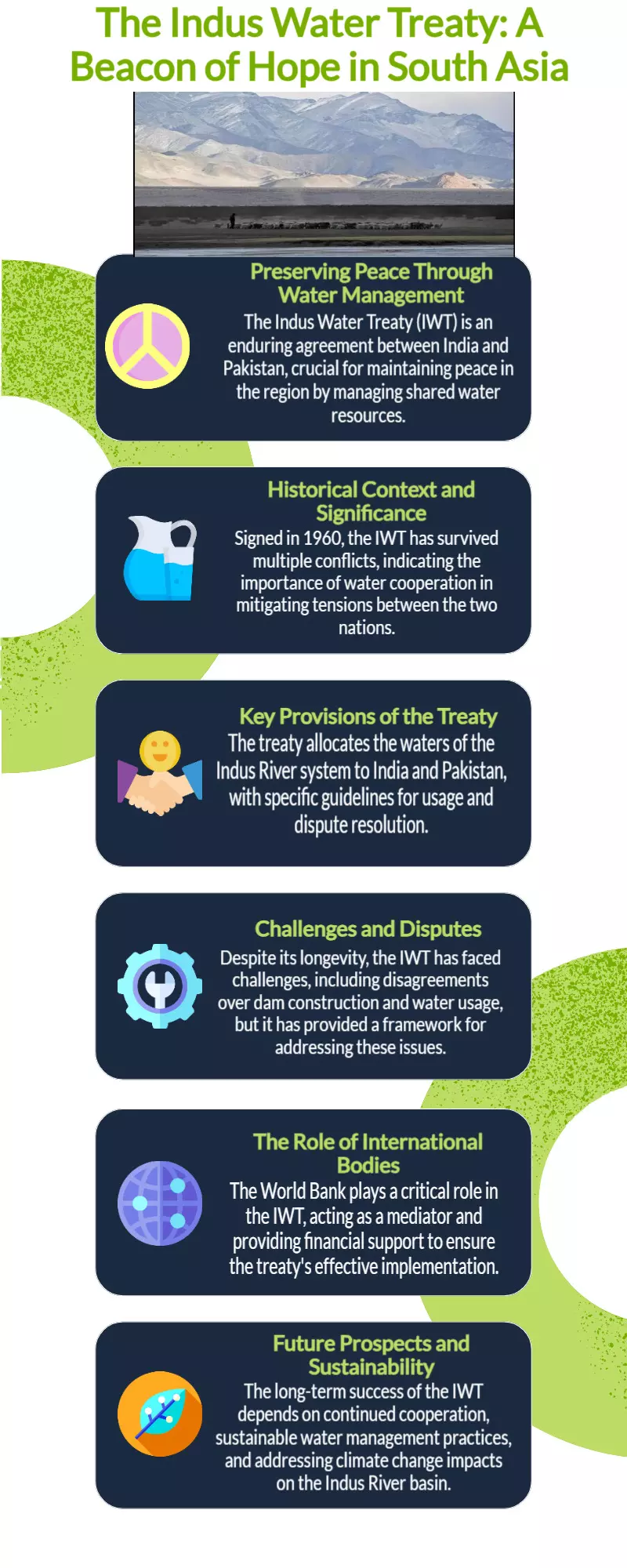The tenuous prospect of peace in South Asia is maintained by the Indus Water Treaty

By : Sandhya
The Indus Water Treaty (IWT) has been a unique example of long-term collaboration between India and Pakistan in an area long characterized by mistrust, militarized boundaries, and unsolved historical grievances. This pact, which was mediated by the World Bank and signed in 1960 by Pakistani President Ayub Khan and Indian Prime Minister Jawaharlal Nehru, was a daring diplomatic achievement that split the waters of the powerful Indus River system with a spirit of realistic optimism.
The treaty is still in effect more than 60 years later, having withstood numerous wars, diplomatic failures, and geopolitical upheavals. However, it is currently at a pivotal point. Tensions between the two nations have increased as a result of the recent terrorist incident in Pahalgam, Kashmir, which killed innocent Indian people. As tensions between the two nuclear-armed neighbors increase, India has sent Pakistan a notification suspending the treaty. Pakistan has allegedly betrayed the spirit of the deal by harboring and facilitating cross-border terrorists, according to New Delhi. Originally intended to be a tool for peace, the IWT now runs the risk of being a casualty of a more significant strategic struggle.
The split of one of the biggest and most important river systems in the world is at the center of the pact. Six rivers make up the Indus basin: the Ravi, Beas, and Sutlej in the east, and the Indus, Jhelum, and Chenab in the west. The western rivers, which together supply over 135 million acre-feet (MAF) of water a year, were given to Pakistan exclusively under the terms of the treaty.
